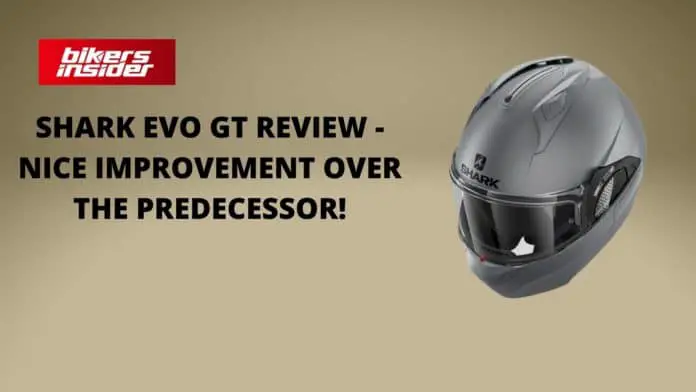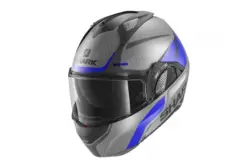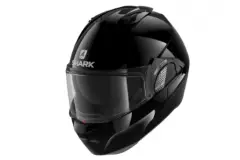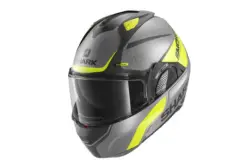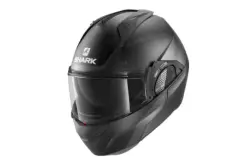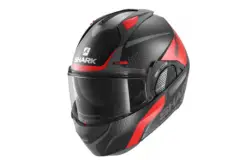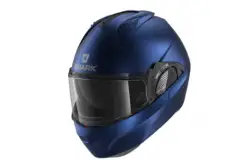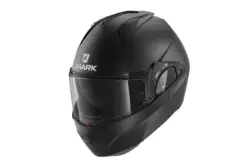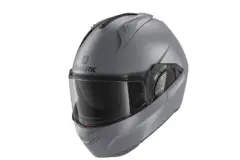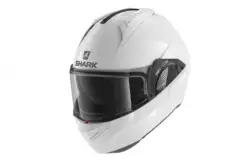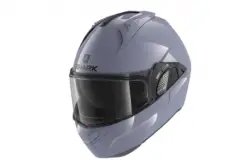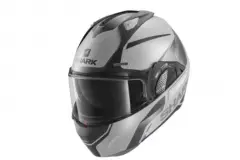Shark Helmets has finally released an update to their modular helmet lineup – the Evo GT. It is the next premium modular helmet in their lineup that aims to update and fix the faults of the Evo One-2 modular helmet. Is it good enough to replace the previous model? Find out in our Shark Evo GT helmet review!
Before we delve deep into the specifics, we would like to say that Shark has done a fabulous job with this modular helmet. It stands tall with the industry leaders like Shoei Neotec 2 and the HJC RPHA 90S Carbon modular helmets.
Also, Shark has fixed the faults of the Evo One-2, like the sticky flip-up mechanism and the overall chin bar configuration. Let’s delve into our Shark Evo GT review to see all the changes and more!
Table of Contents
Shark Evo GT Review – Features
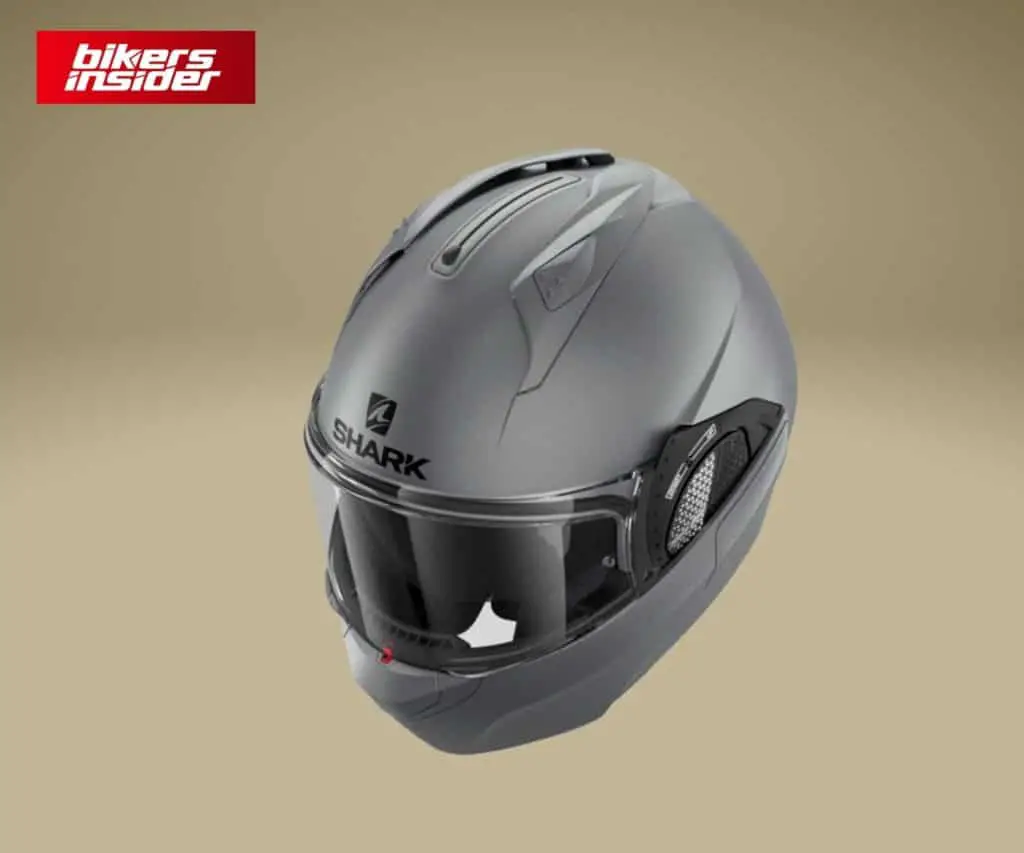
If you are in a rush, here are all the important features of the Shark Evo GT modular helmet to know about:
- Injected thermoplastic shell
- Weighs 1,68 kg (3 pounds 11 ounces)
- Modular helmet
- Auto-up, Auto-down chin bar mechanism
- Pinlock-ready VZ250 clear face shield
- Internal sun visor
- Micrometric buckle system
- Comes with two different thickness liner sizes
- Eyeglasses-friendly Microtech fabric liner
- Speaker cutouts
- Two adjustable, glove-friendly top vents
- Venturi chin vent
- Rear vent
- ECE safety certification and 4/5 SHARP rating
Without further ado, let’s begin with our Shark Evo GT review!
Construction & Design
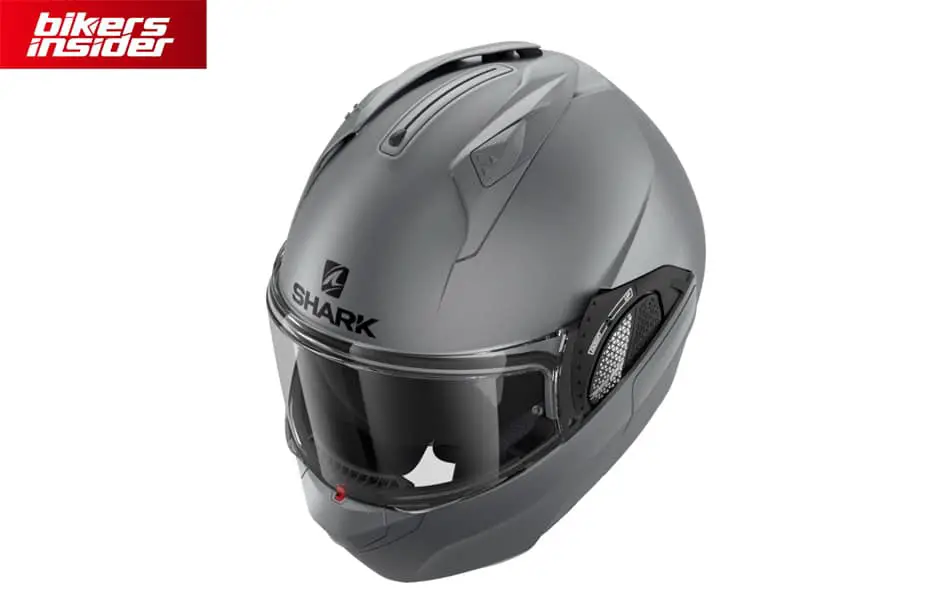
As usual for the Evo series, the shell of the Evo GT modular helmet is made from an injected thermoplastic material. Along with the multi-density EPS, it provides decent impact protection when compared with other modular helmets in the sub-$500 price range.
We can see the improvements over the Evo One-2 helmet regarding weight. The Evo GT helmet weighs 3 pounds and 11 ounces (which is 1,68 kg), which is fairly acceptable for a modular motorcycle helmet.
Check out our Shark Evo One-2 helmet review to see how it holds up against its successor!
As this is a modular motorcycle helmet, it is both a full face and an open face helmet. You can change between these configurations with the help of the Auto-up, Auto-down chin bar system, also present in other helmets in the Evo line.
The only difference is that Shark has revamped the chin bar toggle system to offer higher clearance and better ease of use. Also, the new chin bar toggle will prevent the helmet from scratching the pre-installed Pinlock insert on the face shield.
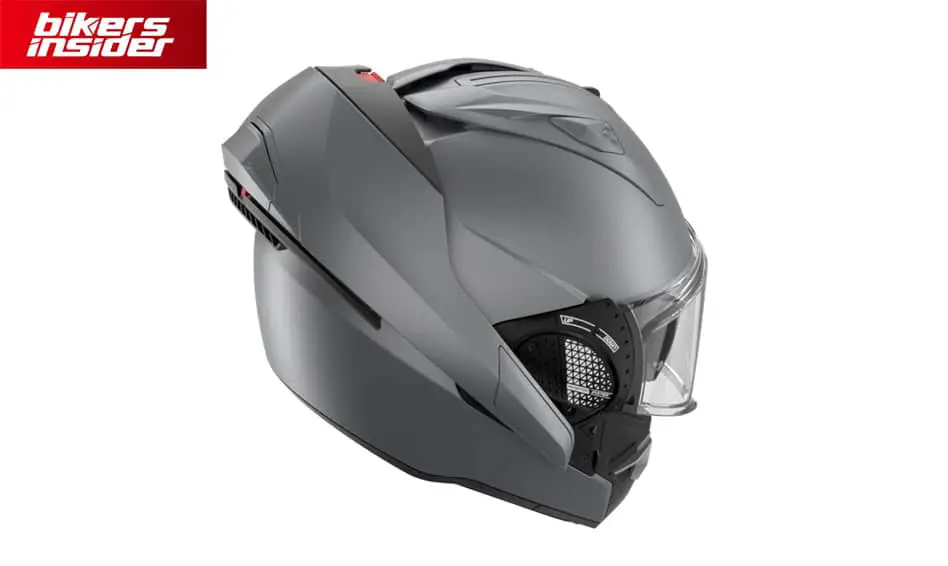
To open the chin bar, press the central button on the chin vent. The visor will automatically lift up to allow the chin bar to go on the rear of the helmet. This is a handy implementation that provides a more aerodynamic profile than your standard flip-up helmet. Since the chin bar is effectively out of the way, Shark has also improved the mechanism to make it easier to close as well.
Vision
In this section of the Shark Evo GT review, we will delve deeper into the visibility aspects of this helmet. We can say that Shark has made some remarkable improvements here!
Clear Face Shield
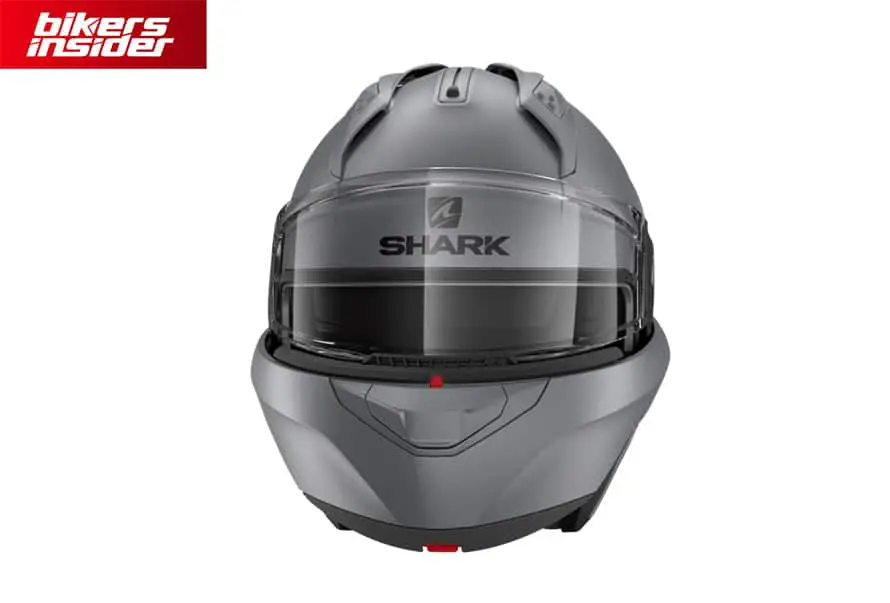
The Evo GT helmet’s visor will be bringing a lot of the notable features of the Evo series, alongside some significant improvements. As usual, it offers a good field of view, and the mechanism that pulls the visor into the helmet makes for a strong seal.
The VZ250 clear face shield is Pinlock-ready, with the insert already in the packaging. This visor comes with an Optical Class 1 rating to prevent visual distortion. The great thing is that it won’t fog up during a ride.
A significant new change that we are seeing is that the helmet will start coming with colored visors. The VZ250 clear face shield is being offered in dark and medium smoke and chrome color schemes, which is certainly very exciting to see.
Removing And Attaching The Clear Face Shield
To remove the clear face shield of the Shark Evo GT, you will need a screwdriver. First, you will need to lift the visor into the open position. Then, cover the screwdriver with a cloth to prevent any scratching on the helmet, and push in on the small triangular notch on the bottom of the visor. Once free of the catch, simply pull the face shield forward and do the same on the other side, and you will successfully remove the face shield.
To put it back in again, just line it up and move it back in until the triangle notch goes into its hole. Very simple and straightforward, for sure!
Internal Sun Visor
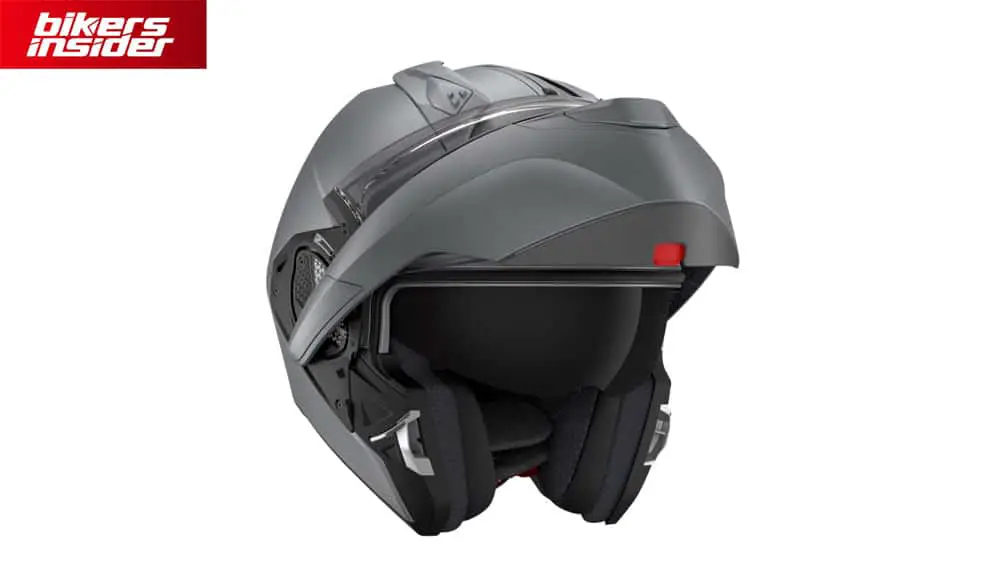
The Evo GT includes an internal sun visor operated by the slider located on the top of the helmet. This ambidextrous mechanism is clunkily placed, and we would honestly prefer it if it was placed in the lower jawline area instead. Still, the sun visor does its job, doesn’t touch your nose, and provides good clearance.
Comfort
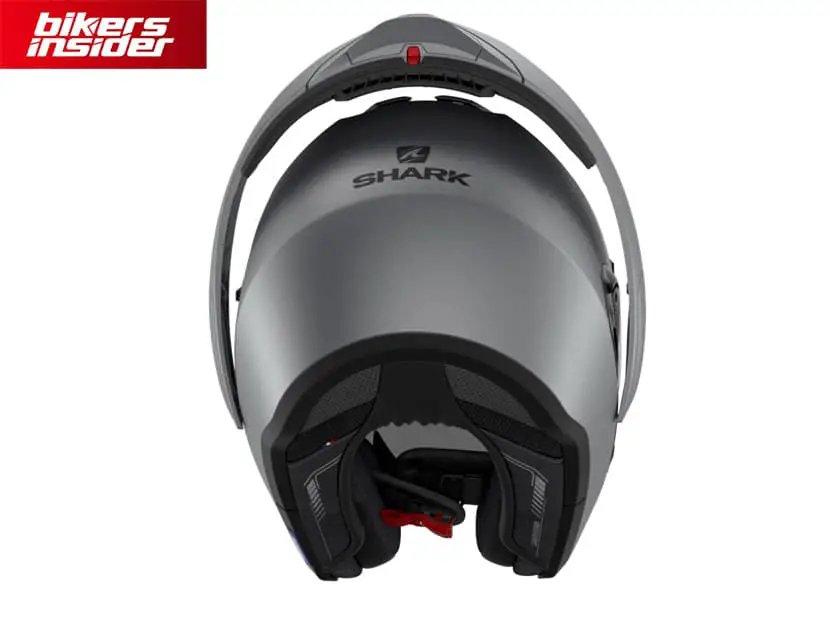
Besides the visor, Shark has also upgraded the interior of the Shark Evo GT helmet. In the section below, we will break down all the individual features of this helmet’s interior!
Microtech Fabric Liner
The benefit you get with this type of liner is that it will provide more comfort than the Evo One-2 while also offering improved moisture-wicking, noise isolation, and ventilation properties. It is removable, washable, eyeglasses-friendly, and is antimicrobial. Summarized, it is premium quality and quite comfortable.
What stands out here is that Shark is allowing you to get a more customized fit out of the box, with two different thickness sizes of the liner. It’s great that Shark is offering this feature, as the fit is one of the most crucial factors for riders when they choose a motorcycle helmet.
Cheek Pads and The Micrometric Buckle System
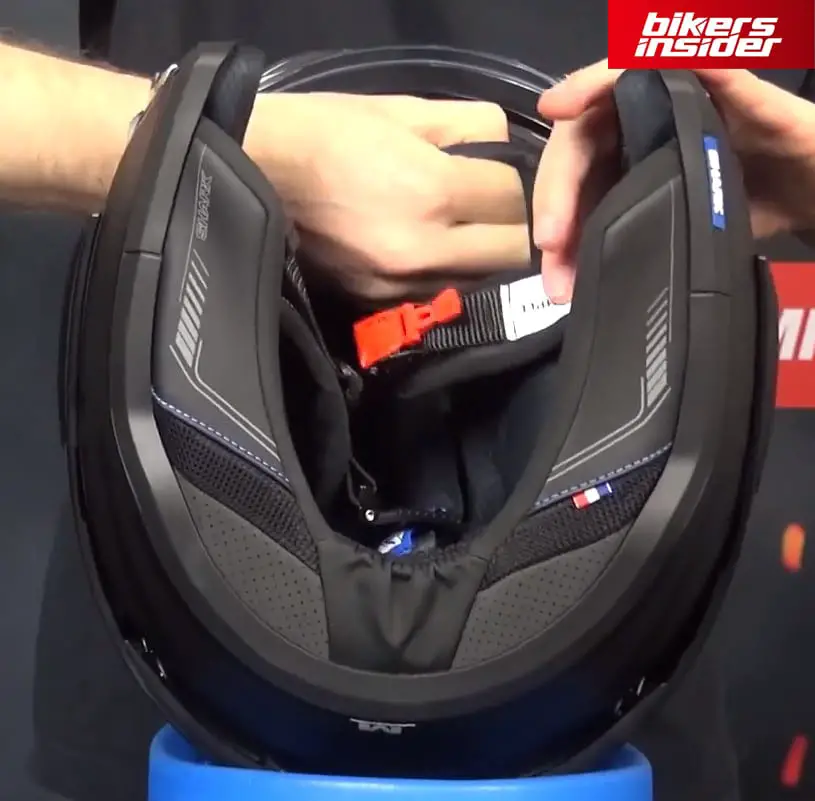
The cheek pads are held in the helmet’s interior with Velcro buttons and inserts. Their material is comfortable, and they feel good against the skin.
The Shark Evo GT modular helmet utilizes a micrometric buckle system which is fairly standard for European helmets. We prefer the double-D ring mechanism, but this one will get the job done but can sometimes feel tight against your neck.
EPS Liner and Bluetooth Compatibility
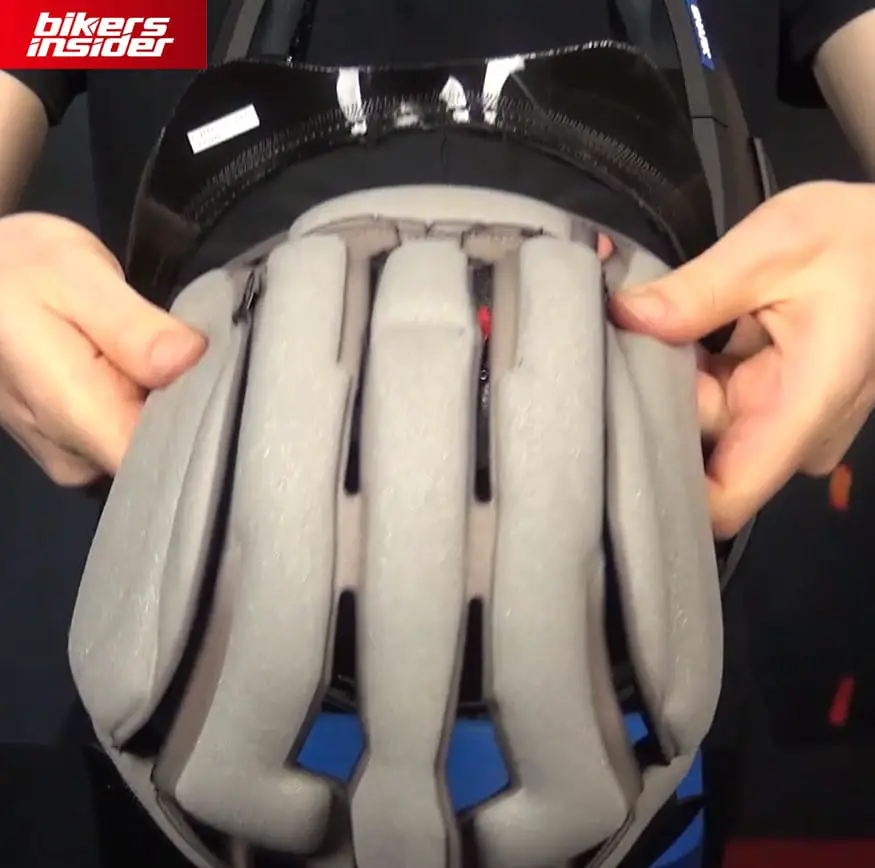
As we remove the comfort liner and the cheek pads, we come to the inside of the helmet and the EPS liner. First of all, we can see that the helmet is prepared for the Sharktooth Prime intercom system, with speaker pockets included. Of course, you can put in any other Bluetooth communicator if you wish so.
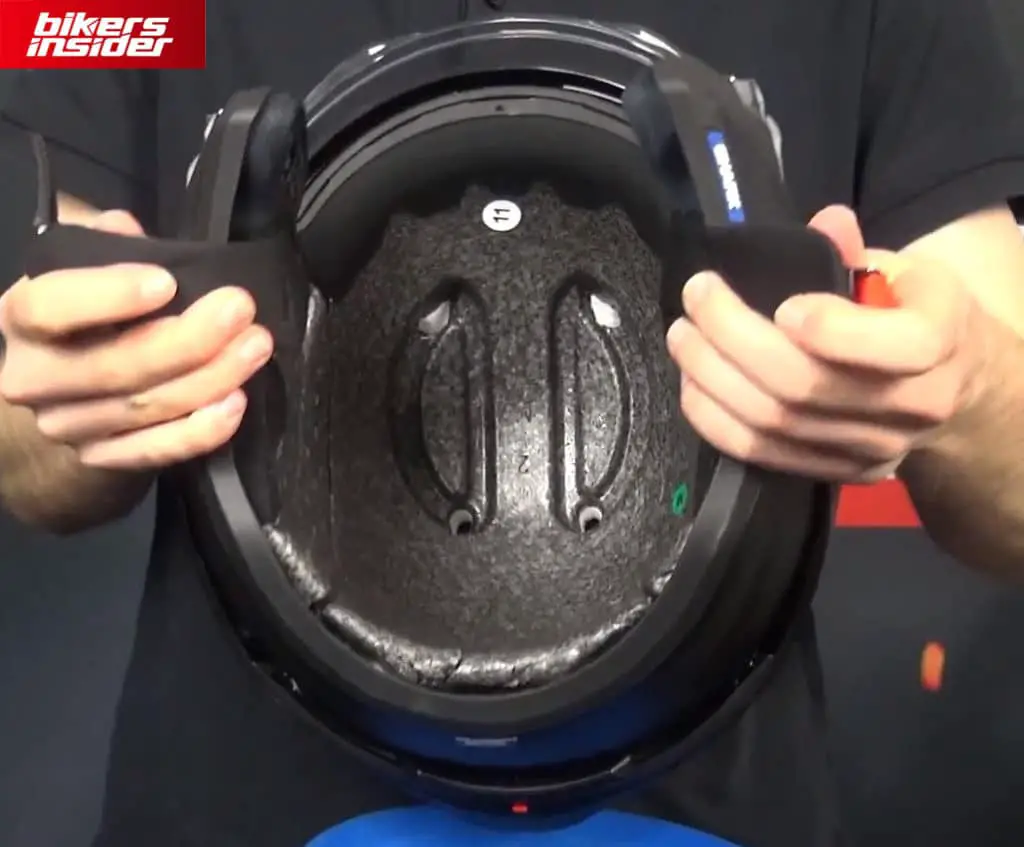
The EPS grooves are numerous, which allows for better internal ventilation of this helmet, which is yet another big improvement over the predecessors.
Airflow
For the ventilation, Shark has gone above and beyond to make a massive change in this helmet’s overall performance and aerodynamics.
Top Vents
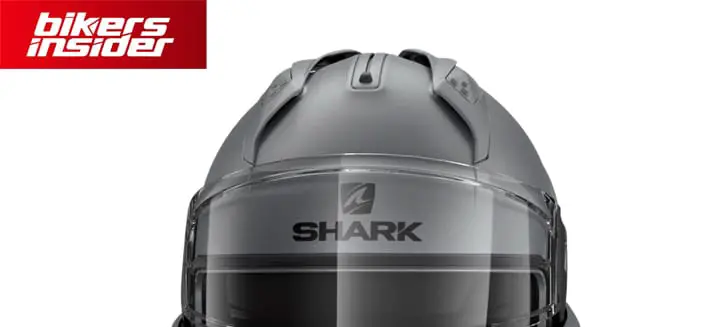
A nice change on the top is that Shark has completely redesigned the vents to make them much more glove-friendly. For example, on the Evo One-2 helmets, you have very small switches that are very easy to miss. The new adjustable vents on the Evo GT use large textured sliders that will make things much easier. Also, they will bring plenty of air for a comfortable riding experience.
Chin Vent
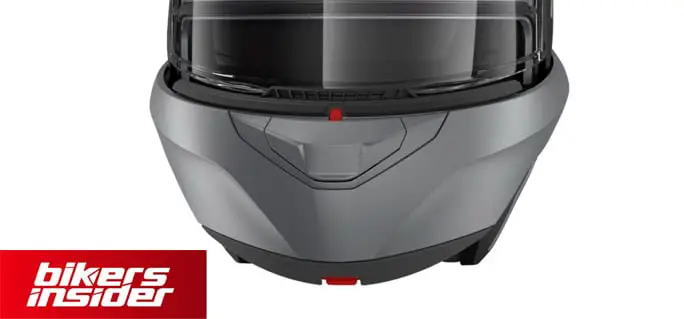
In the chin area, there is the same classic Venturi vent that will suck air into the helmet. A slider is located just inside the chin bar that will let you direct the airflow.
Rear Vent
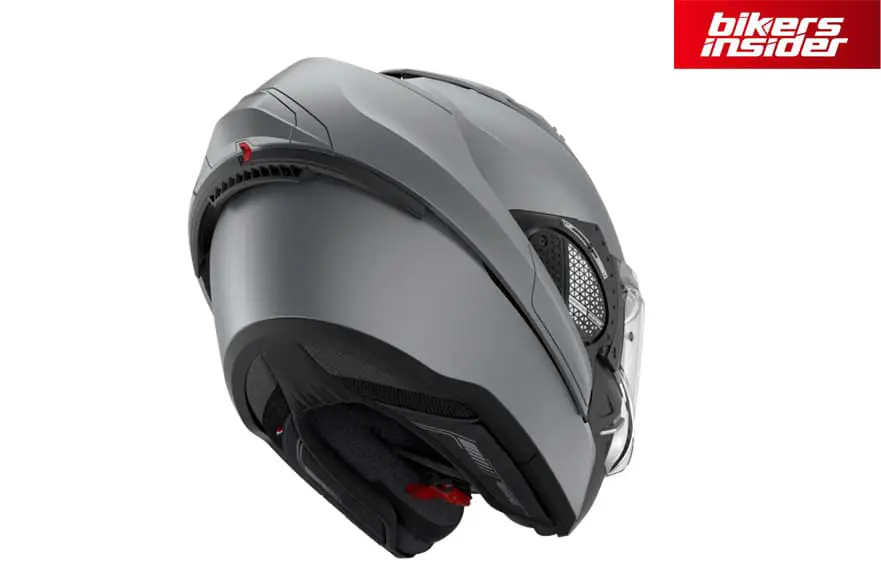
All the hot air that comes in the Shark Evo GT helmet will escape from the rear spoiler of the helmet. With this vent, we can see that Shark has refocused the helmet for performance, as they left out some of the chrome of the past Evo helmets.
How Well Does It Ventilate?
During testing in 14 degrees Celsius, the Evo GT has shown that it is a massive improvement over its predecessors when it comes to internal temperatures – with the internal temperature being 13 degrees Celsius. That means that the Evo GT offers much more airflow than the Evo One-2 modular helmet!
What About The Wind Noise?
When it comes to wind noise, the Shark Evo GT will let in 100 to 101 dB of wind noise at 80 mph speeds, making it one of the quietest Shark helmets and one of the quietest modulars in general. For example, the AGV Sport Modular lets in 10 dB and Shoei Neotec 2 lets in 101 dB.
Safety Ratings
Even though the Shark Evo GT shell is made of cheaper and less durable thermoplastic material, it comes with the ECE 22.05 safety certification. Also, it scored 4/5 on SHARP testing, which is fairly nice.
This helmet is relatively safe, not safe as full-face helmets, but much safer than open-face helmets, that’s for sure!
Available Models
Also unchanged from other Shark helmets is the fact that the Evo GT helmet only comes in two outer shell sizes. The first shell size spans from XS to M and the second spans from L to XL. For more specifics, check out the listing below:
- XS – 53 to 54 cm (20,87″ to 21,26″)
- S – 55 to 56 cm (21,7″ to 22″)
- M – 57 to 58 cm (22,4″ to 22,8″)
- L – 59 to 60 cm (23,2″ to 23,6″)
- XL – 61 to 62 cm (24″ to 24,4″)
When it comes to the color variants, Shark has prepared the Evo GT modular helmet in the following color schemes:
- White
- Black
- Matte Black
- Blue
- Gray
- Matte Gray
- Matte Anthracite
- Electric Blue Matte
- Anthracite Blue Black
- Anthracite Yellow Black
- Black Anthracite
- Black Red Anthracite
- Silver Anthracite Black
Check out the gallery below to see how do the different color schemes look like!
Price
As Shark Evo GT is a relatively new helmet, it is differently priced in select stores. Still, its recommended price is $445/€372/£320, which is quite a lot of value when considering how it compares to industry leaders like Schuberth and AGV.
Summing Up
Now that we are at the end of our Shark Evo GT review, you might be interested in our final verdict.
First of all, this is certainly not the most lightweight modular helmet that you can get due to its thermoplastic shell design. Still, the helmet is quite safe, as it has an ECE rating and a SHARP rating of 4/5.
The chin bar toggle is great and will actually retract on the rear of the helmet to prevent scratching your clear face shield. Also, the chin bar mechanism is quite smooth to operate.
The Shark Evo GT’s visor is improved and offers nice peripheral vision, and we got to say that it’s an absolute blast to have Pinlock out of the box.
Also, the helmet has an internal sun visor, but we would prefer if its actuation mechanism was differently placed.
Regarding the vent scheme, the Evo GT is one of the best on this front when it comes to modular helmets. It will keep you cool during the summer months, and that’s what matters most when riding with a modular. The wind noise isolation could be better, but there aren’t many better contenders in this price range, honestly.
When looking at it from the comfort perspective, Shark has paid extra attention and included multiple fits right out of the box to be more versatile. Overall, the helmet is quite comfortable and won’t feel too tight on your face.
The Shark Evo GT is a successful attempt at improving the Evo One-2 modular helmet, and we’re eager to see it come to the world market in 2021!
Looking for more helmet reviews? Check out our motorcycle helmet reviews section!


